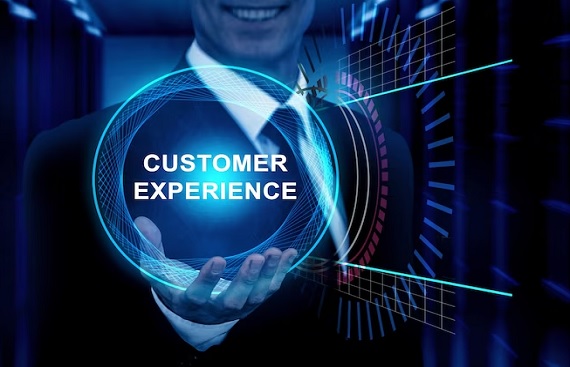How Beneficial is the integration of Immersive Customer Experiences in Business?

Companies constantly seek innovative ways to engage with their customers in today's rapidly evolving business landscape. One such innovation that has been gaining momentum is integrating immersive customer experiences. These experiences have the potential to revolutionize the way customers interact with technologies like Virtual Reality (VR), Augmented Reality (AR), and Mixed Reality (MR). Let's explore the benefits of integrating immersive customer experiences into business operations and how they alter the way businesses interact with their customers. To begin, let's define what we mean by immersive customer experiences. By placing clients in a digital environment where they can interact with goods, services, or information in a highly immersive and realistic way, these experiences go beyond conventional customer engagement. Immersions stimulate multiple senses, such as sight, sound, and sometimes touch, to create a more profound connection between the customer and the brand.
The Evolution of Customer Engagement
Customer engagement has evolved significantly, transitioning from traditional face-to-face interactions, phone calls, and printed materials to a digital landscape characterized by personalized and interactive experiences. In the past, businesses relied on in-person and telephone communications and physical brochures and catalogs to connect with customers. However, advancing technology has reshaped customer expectations. Today, customers seek dynamic, tailored interactions. The rapid development of immersive technologies drives this transformation. In this digital era, customers demand more than static encounters. They desire experiences that engage their senses and resonate personally.
Enhancing Customer Engagement
Immersive experiences can enhance customer engagement by making interactions more dynamic and exciting. VR, AR, and MR applications enable businesses to create interactive product demos, virtual showrooms, or engaging games that capture the customer's attention and keep them engaged. Virtual Reality (VR) in Customer Experiences & Augmented Reality (AR) Applications & Mixed Reality (MR) Solutions & Real-World Case Studies Let's delves deeper into the practical applications of immersive technologies:
- Virtual Reality (VR): VR allows customers to step into a virtual world, providing immersive product demonstrations, virtual tours, and training experiences.
- Augmented Reality (AR) Applications: AR overlays digital content onto the real world, enabling businesses to enhance real-world experiences with digital information, such as product information, navigation, or interactive advertising.
- Mixed Reality (MR) Solutions: MR combines elements of both VR and AR, providing a seamless blend of the physical and digital worlds. This is particularly valuable in fields like remote assistance and training.
- Real-World Case Studies: Examining real-world examples of businesses that have successfully integrated immersive experiences can provide valuable insights into the practical benefits of these technologies.
The Role of Personalization in Immersive Experiences
Personalization plays a crucial role in immersive customer experiences. These technologies enable businesses to customize interactions based on individual preferences, fostering deeper emotional connections between customers and brands. By utilizing customer data and AI insights, companies can deliver highly personalized immersive encounters that resonate with each customer's unique preferences and needs. This level of customization enhances engagement and builds loyalty, creating meaningful and long-lasting customer relationships. Personalization transforms immersive experiences into powerful tools for connecting with customers on a profound and individualized level, ultimately driving satisfaction and brand loyalty.
5G's Possibilities for Immersive Experiences
The emergence of 5G networks heralds a new era for immersive experiences, poised to revolutionize customer engagement. These high-speed networks promise to turbocharge immersive encounters by offering lightning-fast, dependable connectivity. With 5G, businesses can seamlessly deliver high-quality, real-time, immersive content to customers, elevating engagement and interactivity to unprecedented heights. The excellent bandwidth and low latency of 5G make a wide range of opportunities in the immersive technology environment possible. Virtual Reality (VR) experiences can deliver smoother and more realistic interactions, Augmented Reality (AR) programs, and Mixed Reality (MR) solutions that operate with less lag. This disruptive potential touches a wide range of businesses, including healthcare, education, gaming, and entertainment. In essence, 5G acts as a catalyst for the mass adoption of immersive experiences, launching companies into a future where high-quality, real-time immersion becomes the standard, boosting customer engagement and satisfaction in general.
Sum-Up
The future of client involvement assures immense potential as technology develops further and organizations adopt these immersive solutions. Looking ahead, we can see a growing integration of immersive customer experiences into company strategies. Immersive experiences will become more common place as technology develops, fundamentally altering how organizations relate to their clients. Businesses can maximize the benefits of immersion and prosper in the always-changing industry by staying ahead of the curve and utilizing immersive technologies wisely.
